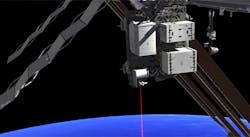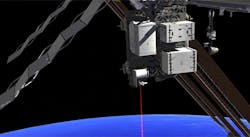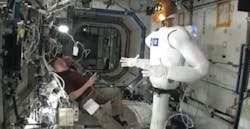NASA selects research and technology proposals from small businesses, research institutions
WASHINGTON, 5 May 2014. NASA officials have selected 383 research and technology proposals, from 257 U.S. small businesses and 29 research institutions, for negotiations that could lead to contracts worth a combined $47.6 million under NASA's Small Business Innovation Research Program (SBIR) and Small Business Technology Transfer (STTR) Program.
"SBIR and STTR projects are at the foundation of America's future in space and aeronautics," says Michael Gazarik, associate administrator for Space Technology at NASA Headquarters in Washington. "Innovative ideas explored by our partners in industry and the broader U.S. research community help NASA execute our missions and bring new American products and services to the global technology marketplace. These job-creating NASA investments fuel the innovation engine these small businesses provide to our economy."
NASA is funding proposals to enable in-space transportation for human and robotic missions; new ways to keep astronauts safe on their journey; and ways to keep spacecraft systems operational.
Selected proposals aim to enable landing on, traversing across, and sampling the depths of asteroids, Mars, or other distant destinations. Proposed new technologies will help NASA search the sky for planets outside our solar system and study the universe back to the beginning of time.
NASA's SBIR and STTR fund technologies used here on Earth. Projects will help to make new generations of airplanes quieter and more efficient, and air traffic management more capable, officials say. New space technologies will orbit the Earth, studying our atmosphere, our poles, our oceans, and even our sun, assessing the health of the planet and providing invaluable information about the impacts of climate change.
"These selections are part of NASA's Space Technology Mission Directorate investment in new technologies that address several high priority challenges for achieving safe and affordable deep-space exploration," Gazarik adds. "Aligned with NASA's Space Technology Roadmaps, the agency's Space Technology Investment Plan and the National Research Council's recommendations, these focused areas will assure we remain on the cutting edge of advanced space technology. SBIR and STTR technologies provide an early stage foundation across all our thrust areas."
NASA issued two concurrent solicitations for Phase I proposals. A general solicitation for both SBIR and STTR sought Phase I proposals in response to a broad range of research topics. A second select solicitation for the SBIR program only focused on a small group of topics of particular interest to NASA.
The competitive programs are based on a three-phase award system. Phase I feasibility studies evaluate the scientific and technical merit of an idea. Phase I awards are for six months, and a maximum of$125,000. Firms successfully completing Phase I are eligible to submit a Phase II proposal, expanding on the results of the developments in Phase I. Phase III awards consider the commercialization of the results of Phase II and requires the use of private sector or non-SBIR federal funding.
For the general SBIR Phase I solicitation, NASA chose 315 proposals worth approximately $39.1 million. For the second select SBIR Phase I solicitation, NASA chose 36 proposals worth approximately $4.5 million. NASA chose 32 proposals with a value of approximately $4 million for STTR Phase I projects. The three solicitations attracted proposals from 37 states.
Selection criteria included technical merit and feasibility, along with experience, qualifications, and facilities. Additional criteria included effectiveness of the work plan and commercial potential and feasibility.
NASA's Ames Research Center at Moffett Field, Calif., manages the SBIR program for NASA's Space Technology Mission Directorate. NASA's 10 field centers manage individual projects.
The two innovative technology programs are part of NASA's Space Technology Mission Directorate, which is innovating, developing, testing, and flying hardware for use in NASA's future missions. NASA's investments in space technology provide the transformative capabilities to enable new missions, stimulate the economy, contribute to the nation's global competitiveness, and inspire the next generation of scientists, engineers, and explorers.



